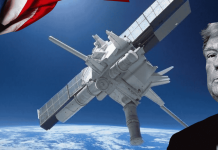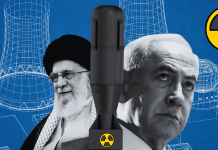As the US is ramping up its efforts to mine on the moon and outer space, Russia has been ignored by Trump Administration drawing sharp reactions from Moscow. Could this snub provoke Russia to consider an alternative with China and possibly India for launching an alternate moon project?
S-400s A Game-Changer For India; Indigenous Missile Defense Systems Useless: Chinese Expert
The Donald Trump-led administration is formulating a legal framework for mining on the moon under a new U.S.-sponsored international agreement called the Artemis Accords.
The Artemis Accords, named after the Nasa’s new Artemis moon program, propose “safety zones” that would enclose future moon bases to prevent damage or interference from rival nations or firms operating in the vicinity.
The US is a member of the 1967 Outer Space Treaty and sees the “safety zones” as an implementation of one of its highly debated articles. It states that celestial bodies and the moon are “not subject to national appropriation by claim of sovereignty, by means of use or occupation, or by any other means.’’
In layman terms, it means that if any country/firm is going to be in the vicinity of another country/firms safety zone operations, then the former needs to reach out to the latter in advance and only proceed after due consultation, keeping in mind the safety of everyone.
The agreement is a part of NASA with allies to put humans and space stations on the moon within the next 10 years and indicates the independent space agency playing an increasing role in implementing American foreign policy.
Since space is seen as the latest military domain, countries are increasingly investing in space programs and missions to forward their interests.
Chinese Military Base In The Pacific Near Australia Could Be A Nightmare For The US
In the next few weeks, the US will aim to formally negotiate the accords with allies that have ‘like-minded’ interests in lunar mining. Canada, Japan, the EU and the United Arab Emirates are the countries that will possibly team up with NASA.
Russia, one of the powerhouses of space technology and innovation, has been left out of the agreement. The U.S. Defense Department views Russia as a hostile spacefaring country due to its “threatening” satellite movements toward U.S. spy satellites and as a result, won’t include Moscow in Artemis Accords negotiations.
In early April, Russia had criticised Donald Trump’s executive order that encouraged citizens to mine the lunar surface and celestial bodies for commercial purposes and linked the policy to colonialism saying it “hardly sets the countries to a fruitful cooperation.”
Asian giants and rising space powers China and India are also not part of the lunar accord even though both nations are also experienced space players with equally high ambitions.
Some netizens speaking to the EurAsian Times were left wondering if the RIC triad (Russia, India and China) could possibly join hands in a similar accord? All three countries have put forward proposals for mining in space in the past with Russia setting up the Roscosmos State Corporation for Space Activities and Bejing and New Delhi floating ideas about possible helium-3 extraction.
UK Wasting Billion Of Dollars In Purchasing American ‘Stealth’ F-35 Fighter Jets: UK Experts
Russia is technologically advanced and considered by many as far ahead in space technology than the US but hampered tight pockets. India and China are not far behind with both nations having expertise and the manpower for celestial missions.
As recently as yesterday, China successfully launched a new rocket and prototype spacecraft in a major test of its ambitions to operate a permanent space station and send astronauts to the Moon. India, under the aegis of the Indian Space Research Organization, aims to launch its third lunar mission, Chandrayaan-3 and Gaganyaan-India’s first manned space mission in the coming years.
Nasa is pouring billions of dollars into the Artemis program, which aims to place humans on the moon by 2024 and developing a “sustainable presence” on the lunar south pole consequently, with private firms mining lunar rocks that can be transformed to rocket fuel.
The US passed a law in 2015 permitting firms the property rights to resources they mine in the outer space, but no such laws exist in the global community.
Russia, meanwhile, also has plans to establish a long-term base on the moon by 2030. A 2014 draft government program designed by Roscosmos sketched a three-step plan toward manning the moon. Its final stage planned for 2030 envisions humans setting up infrastructure for a colony using local resources.




